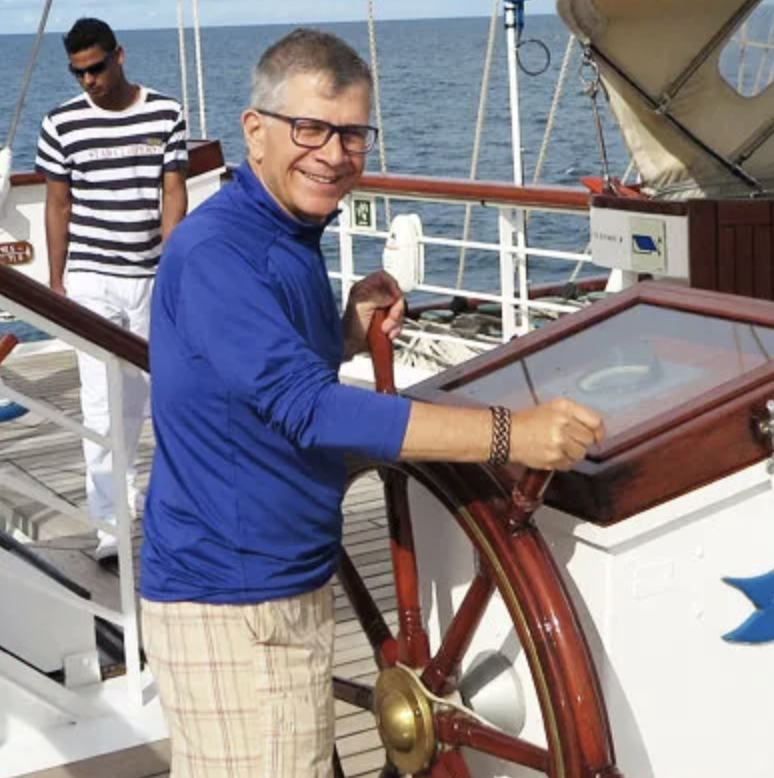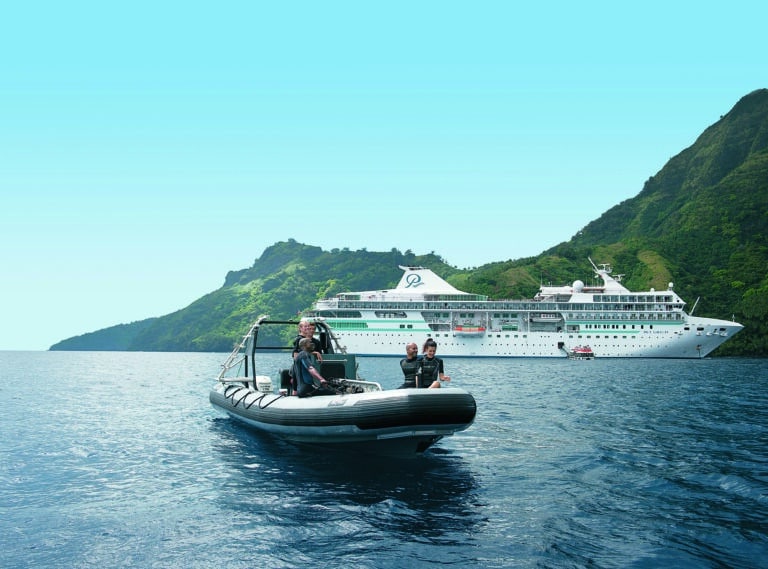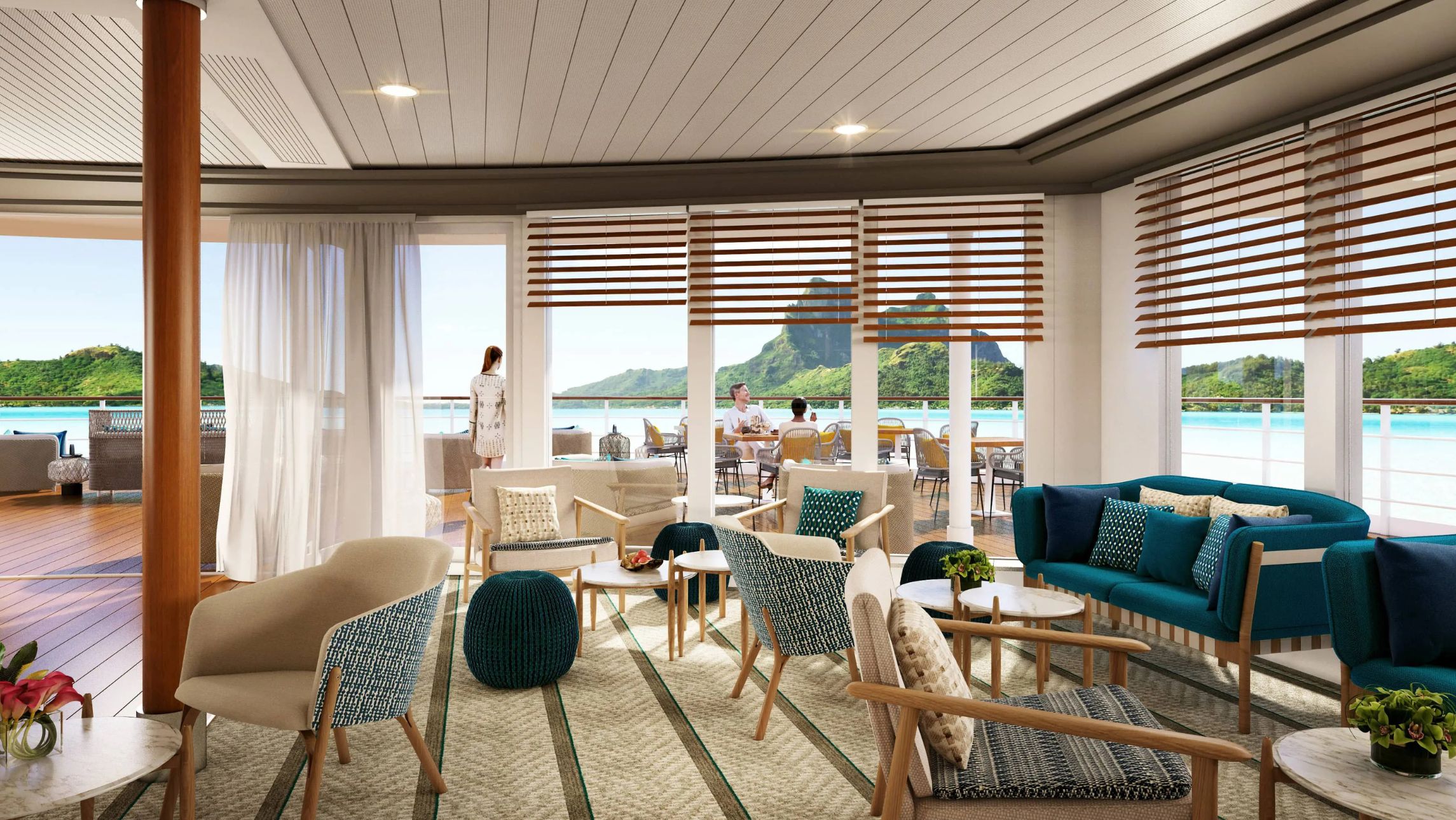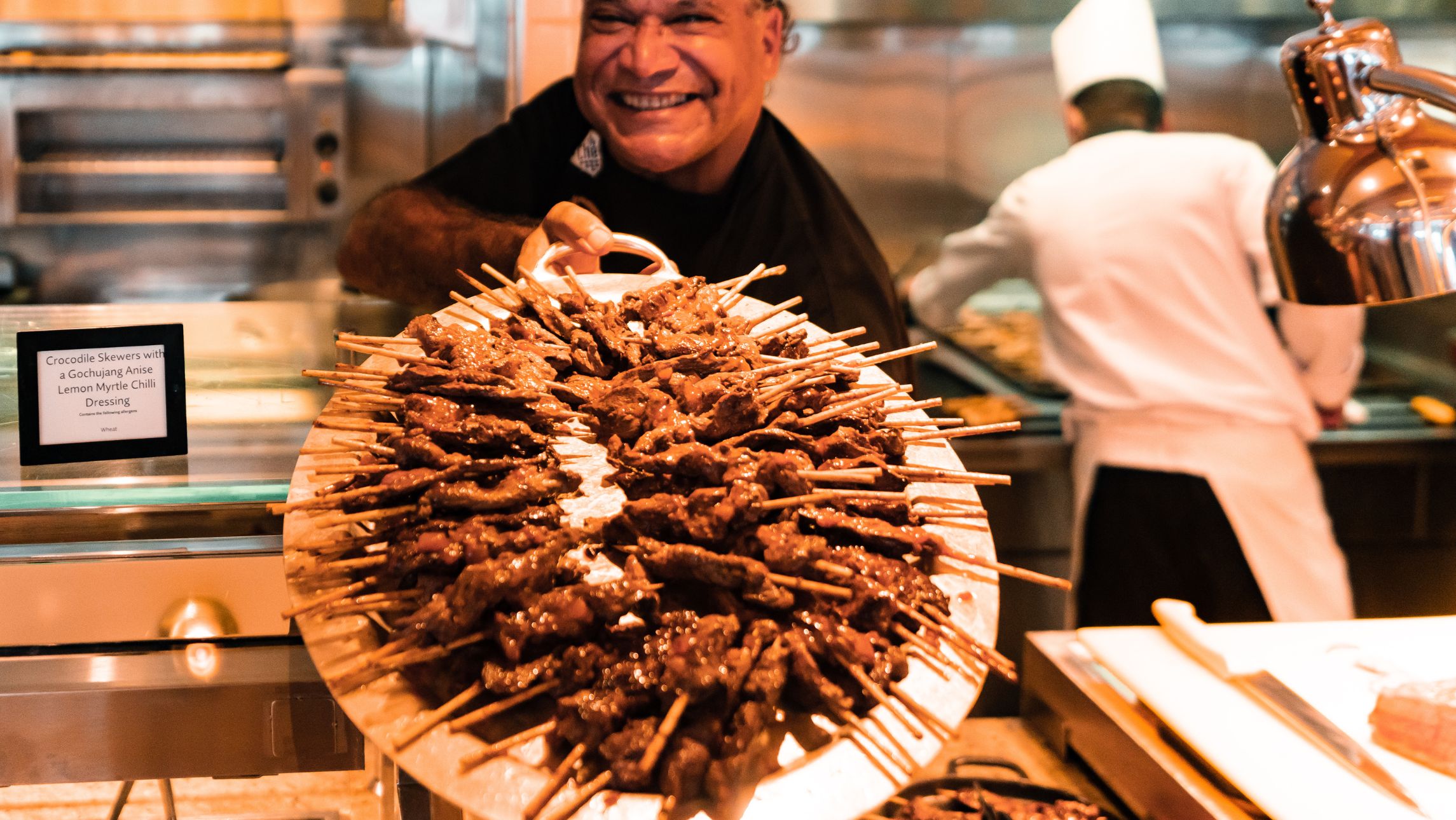French Polynesia on Paul Gauguin is a gem that’s about to be rediscovered.
It’s 2am in Tahiti, and we’ve just landed at Papeete airport. Far from the usual scene of grumpy immigration officials who have drawn the short straw and got the midnight shift, there is a band playing.
The trio is not just playing. They strum their ukuleles like a heavy metal band on steroids, banging out a happy melody that’s probably about drinking rum, dancing with amply endowed women and eating fresh tuna.
They move amongst us dolling out sweet-smelling garlands. And they wear hats that anywhere else would be considered very silly. They are made of huge blooms and seashells.
The next 14 days are spent in the warm embrace of French Polynesians. They seem to have found that happy place we’re all searching for. What other nation would make the ukulele its musical instrument of choice and the Hinano beer logo an emblem?
It is probably why they greet us everywhere like long-lost friends.
We’re sailing French Polynesia and the Society Islands with Paul Gauguin, the stately grand dame that has had this region’s beautiful lagoons, bays and islands virtually to itself for a quarter of a century.
Once the prized possession of a local hotelier and environmental activist, the French luxury line Ponant beat a big ship line to the punch and purchased her and her iconic brand in 2019, just before the pandemic.
Onboard Paul Gauguin
She may be mature in years – the vessel is 25 and started life with Seven Seas Cruises – but her name has travelled well beyond the 117 islands she sails around. In America, her reputation is massive, which explains why so many of her passengers come from the US.
Now Ponant, a French luxury small-ship adventure specialist with big ambitions, is intent on making Paul Gauguin a global brand. The ship went to Singapore in January for her second refit, and Ponant may well put another of its iconic small vessels in the area to increase numbers to this largely undiscovered but fabulous cruise and travel destination.
Ponant is just right for French Polynesia – and not just because of its Gallic origins. Even in this most friendly of places, there are moves to protect the way of life, with recent legislation maintaining vessel sizes at about 1000 passengers. Bora Bora, a screensaver destination with jaw-dropping white beaches, azure waters, coral reefs and lush green peaks, has limited ship sizes to 1200 passengers.
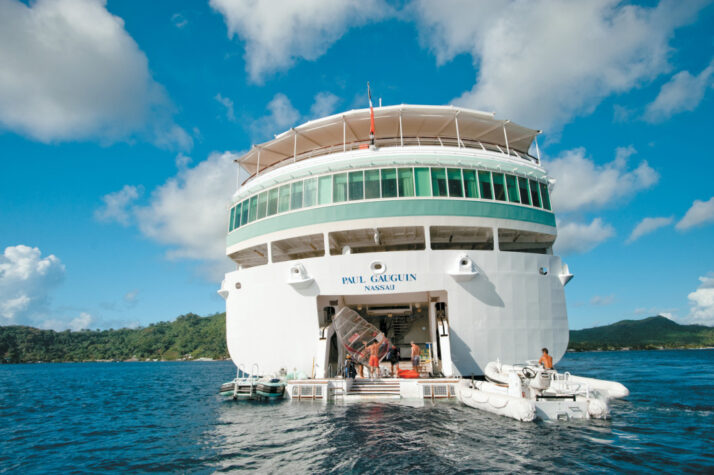
Paul Gauguin, with its shallow draft, is just right for the islands, too. She can drop anchor anywhere and on board, her pool deck, three restaurants and marina deck are the perfect complements.
There is something of a relaxed, upmarket club atmosphere on board. Many among the crew have been with the ship for more than a decade. Pascale Guertin, the singer who does a mean Edith Piaf night, has been working at the theatre and La Palette bar since 2014. Catering chief Paul Ellis proudly boasts he now has the sons of his chefs working as apprentices.
It’s an extraordinary tribute to the ship and its location. Paul, an American, has lived in Papeete with his French Polynesian wife for 11 years.
The itinerary
As we board for a 12-day Cook Islands and Society Islands cruise, we quietly applaud the way this destination has flown under the radar. Polynesians have an extraordinary way of life. But it’s fragile and needs protection.
In Papeete, the bustling capital with a population of 25,000, you might be forgiven for thinking this is just another warm-climate island. But visit the food markets and you’ll see just how abundant the most wonderful produce is. Hunks of delicious fresh red and white tuna are sold everywhere – the locals eat it raw or with tartar sauce. Fruits like pineapple, pawpaw and mango abound.
Some say French Polynesia suffers from “island time” – we frazzled superannuated city folk consider that an affliction. But those who love the place don’t see it that way. It’s about getting your priorities right.
Despite the abundance of fruit, the happy Polynesians don’t stress about sending this bounty abroad. Only five per cent of local fish is allowed to be exported. As we worry about “food sovereignty”, maybe we should take a leaf out of their book.
Mr Ellis says his attempts to get local supplies for the ship have had limited success. “If I ask for 800 pounds of mangoes, I generally get half or less,” he tells us. “They would rather let them fall on the ground than collect them for trade.” Our driver on the island of Aitutaki confirms that historic land ownership, where tribal elders hand out parcels to local families, means there is little ability to grow plantation crops. Much of it has to be flown from California.
What underpins this position is French Polynesia’s colonial past. Missionaries arrived in the 1800s and the French navy wasn’t far behind. Today, it’s still reliant on its colonial master for up to 80 per cent of its income.
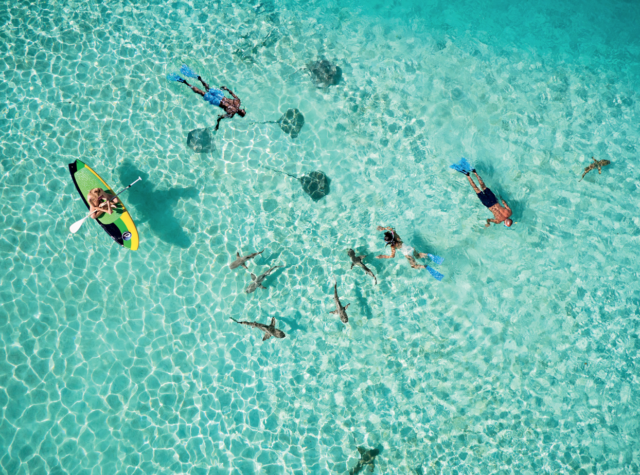
The food on Paul Gauguin
Paul Gauguin has a unique claim to food fame: it is one of only a handful of cruise ships allowed to serve fresh, unfrozen fish, thanks to the health of this region’s waters and local laws.
Mr Ellis serves us moonfish and demonstrates how to de-bone this massive local delicacy. It’s huge – about 12.5 kilograms. During our cruise, we will sauté, poach, or fry 1000 kilograms of mahi mahi, wahoo and yellow-fin tuna – all of it from local waters.
The food is excellent aboard the ship. L’Etoile serves different regional dishes each lunchtime, and more formal fare at dinner. The Veranda has breakfast al fresco and creations from Jean-Pierre Vigato, one of Paris’s most celebrated chefs, in the evening. The Grill is less formal and serves up juicy steaks.
Who’s onboard
Mr Ellis has been readying his 28 staff for the more demanding requirements of his growing band of French guests, arriving thanks to the ship’s new owners.
It’s an interesting cultural melting pot. Among our guests, a family of 19 from America are celebrating their 94-year-old father’s birthday, and a French family of eight, whose delightful children turn up for dinner in bow ties and dresses, occupy the top suites.
Life aboard Paul Gauguin – the French painter’s works are everywhere and there is even a tiny museum to his memory – is almost as laidback as the islands, though there is a slacks-and-shirts dress code for dinner at L’Etoile and La Véranda.
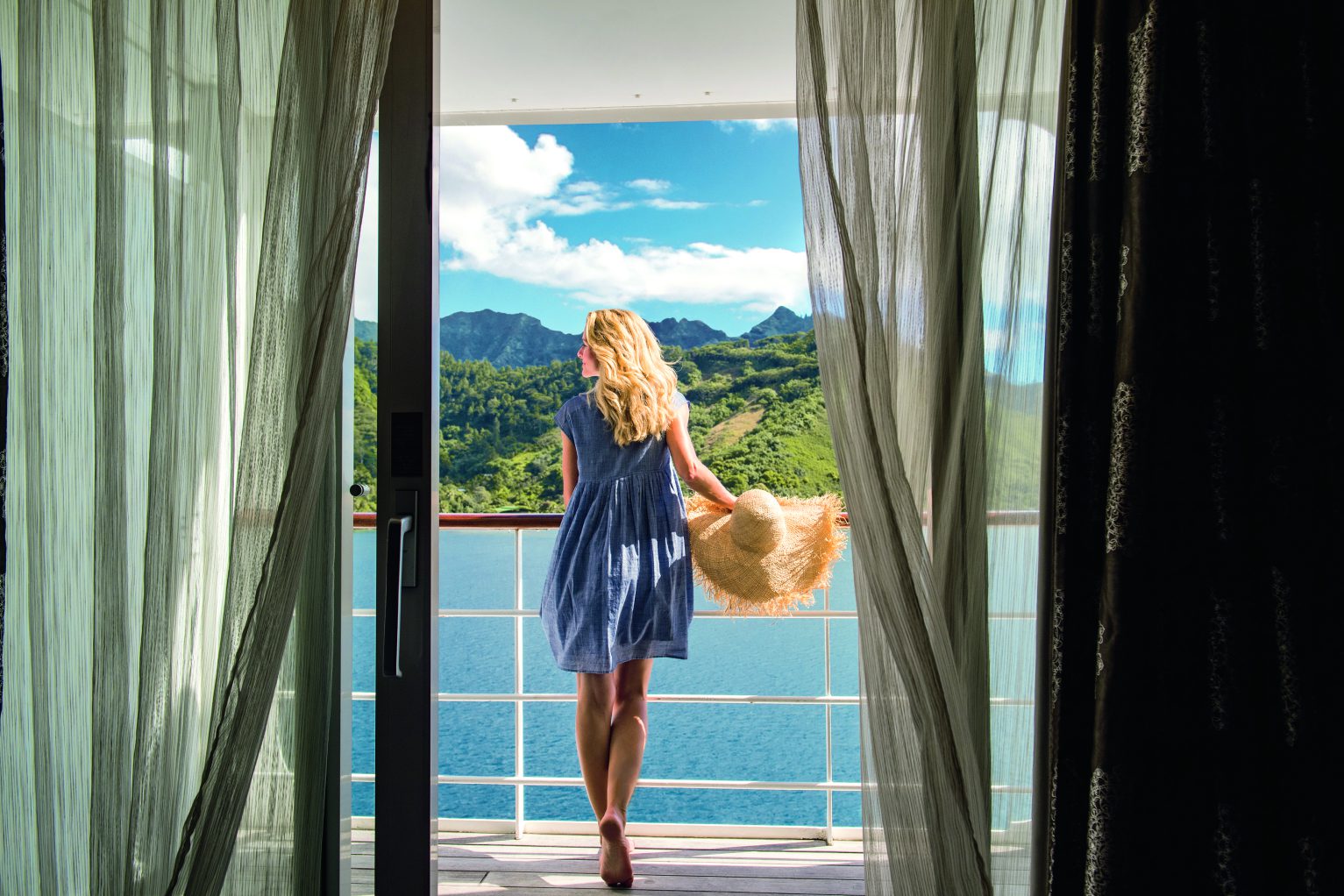
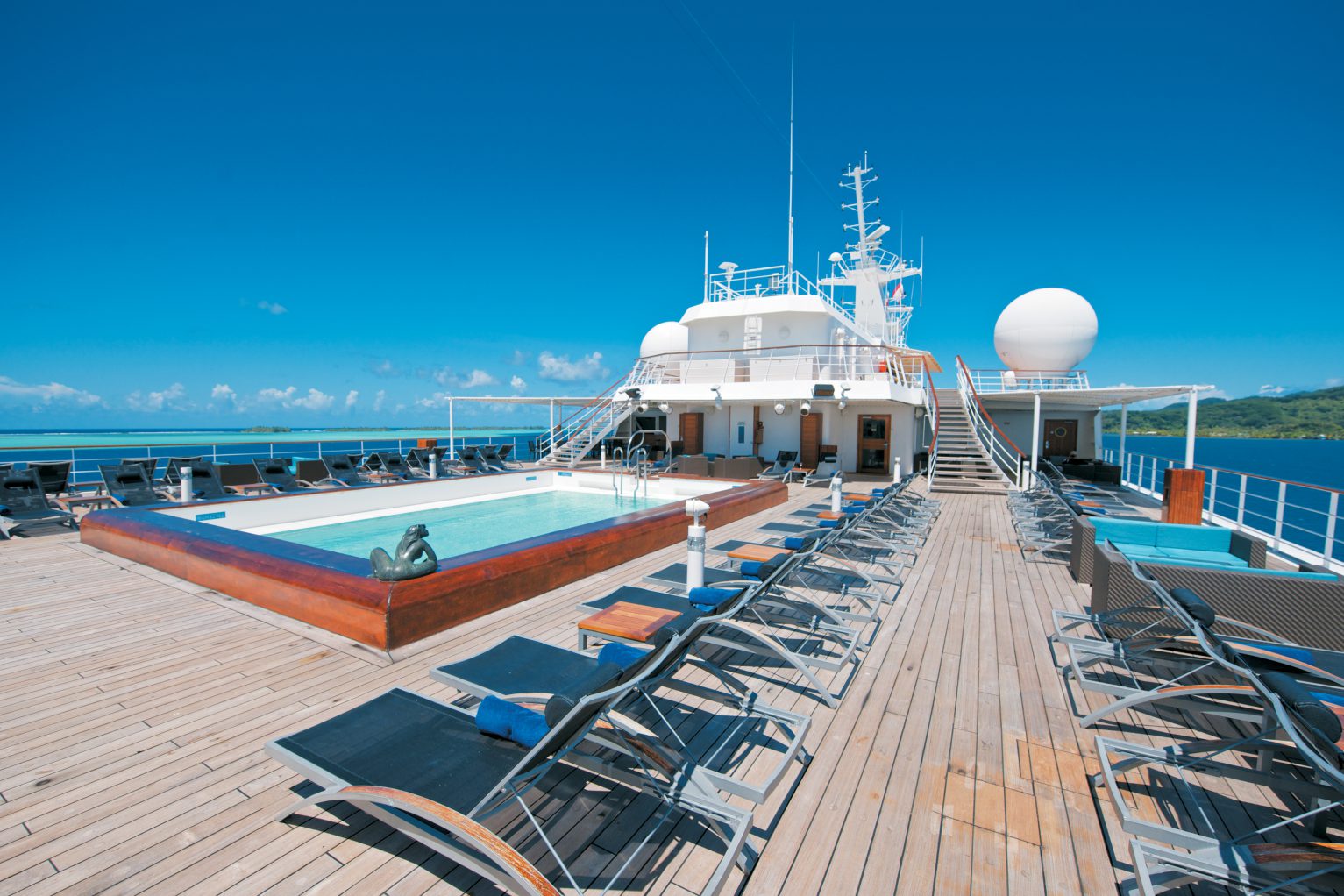
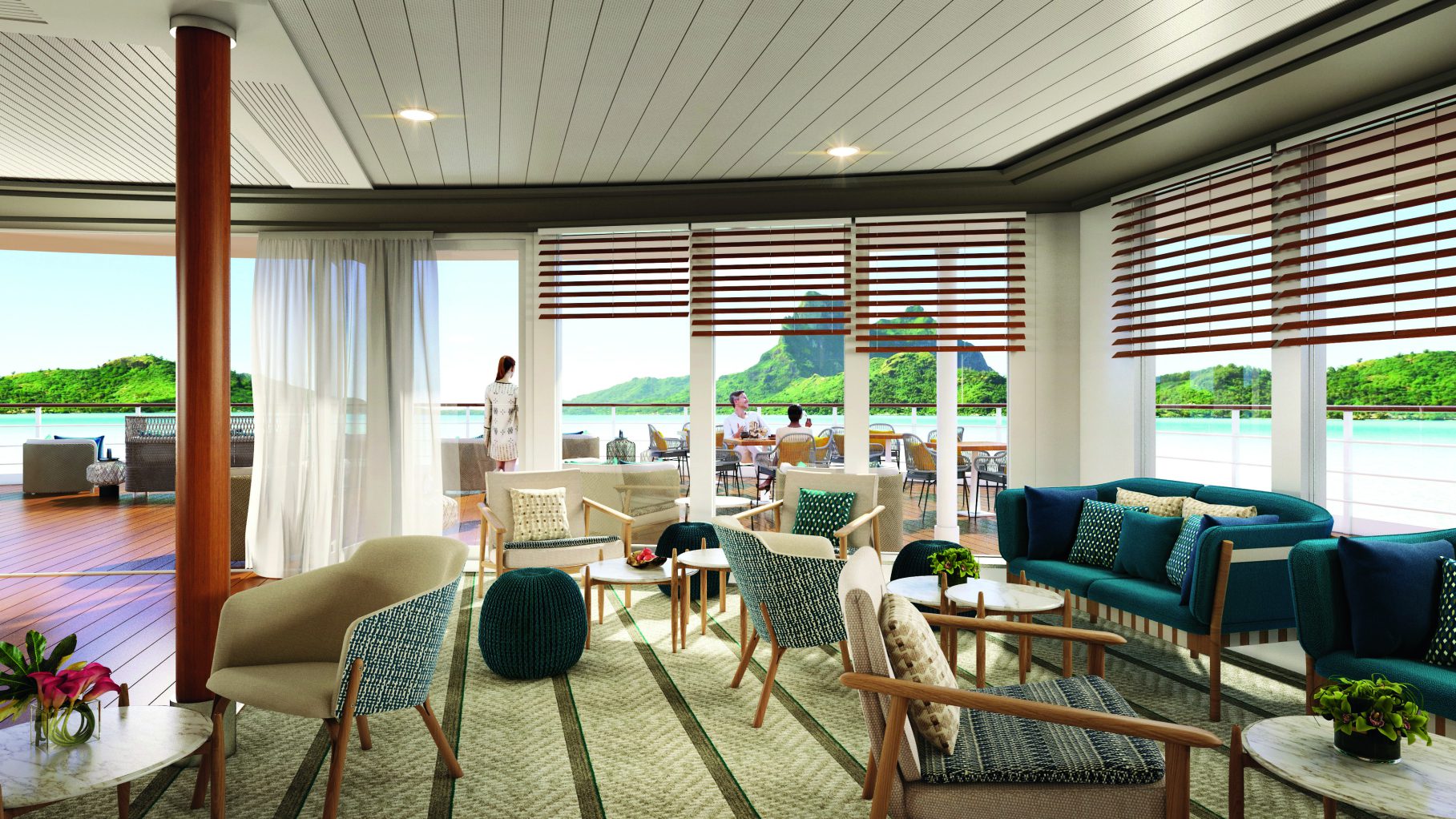
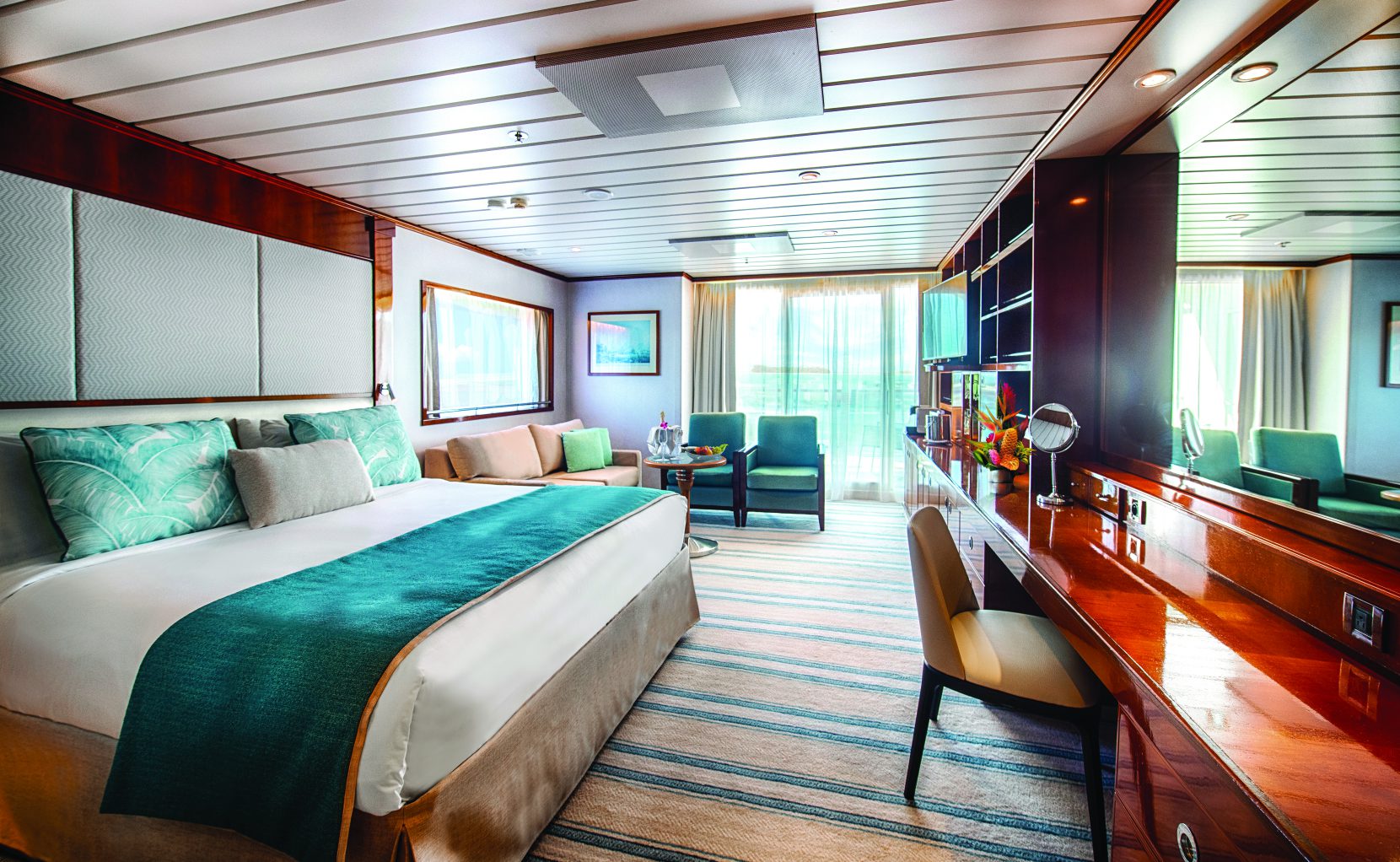
French heritage is everywhere, from announcements (dual language, with English first) to the fast-talking French cruise director and pony-tailed guest lecturer.
The captain for our sailing is one of the most senior of Ponant’s senior crew – Patrick Marchesseau was in command when Le Ponant was taken by pirates off Africa. His bravery made him a French national hero, and he wrote a book and starred as himself in a French-language movie.
The bronzed captain throws himself into dancing by the pool and spends time with every one of the 200 or so guests. He is on a short-term loan and will soon be back aboard the luxury icebreaker Le Commandant Charcot in his favourite Antarctic.
The voyage
Our voyage is blessed with great weather and almost all excursions are about the water.
“Just don’t pat the sharks,” our water guide, a genial Taai, tells us before we jump over the side of his glass-bottomed boat into glass-clear seas.
We can, however, pat the stingrays who nuzzle up to us and wrap us with their wings and will take fresh fish from your hand.
A boat boy called Patrick tells me they are responding to the vibrations in the water. He whistles and a giant comes to the surface. He gives it a kiss and winks at me. “They only speak Tahitian,” he says.
It’s a good story. But a pocket full of bait fish tells a different one.
As well as Tahiti, where our cruise begins and ends at the InterContinental hotel, Bora Bora is the rockstar destination. A small South Pacific island northwest of Tahiti, it is gobsmackingly beautiful. A young American puts it well: “Round every corner is a screensaver moment!”
The colours are awe-inspiring. It’s 30 square kilometres of sand-fringed beaches, a turquoise lagoon protected by a coral reef with Mount Otemanu, a 727-metre dormant volcano, rising at its centre.
There are about 10,000 locals – but right now there are also 18,000 tourists staying at 14 resorts, all lured by the breathtaking beaches and the famous overwater bungalows.
The shore excursions
We hold a barbecue lunch on a Paul Gauguin private island, where guests can have a massage in an overwater treatment room. One American couple renews their vows under a palm tree. The captain officiates and the obligatory ukulele band plays the bridal waltz.
We hire a car and visit Bloody Mary’s, a seafood bar that has attracted the Rolling Stones and a host of film stars.
Scuba diving is available on the reefs, and after a two-hour training session in the pool, I qualify to see parrot fish, rays and sharks. Shoals of blue damselfish hang around the larger coral stumps. Above us in the water, a parade of bright yellow “sea scooters” – a helmet-style top allows riders to breathe normally – passes with a jolly wave.
French Polynesia is expensive, so the best way to see it is on a vessel like Paul Gauguin. Apart from excursions and the spa, there were few other expenses. Wine is included with food.
Our cabin is well appointed, relaxed and with a balcony where we can view the amazing skies, volcanic clouds and astonishing sunsets.
Tahiti hotel stays bookended the cruise and made for a good rest before the journey home. Without direct flights, we flew into Auckland and then onward. Direct flights were not available at the time of writing and were sorely missed.
It’s a great destination for Australians. Ponant, as beautiful as the Caribbean but still unspoilt. You’ll even learn to love the sound of a ukulele, I promise!

